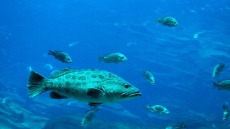The reason why the sight of a bomb or any other threatening object triggers panic in your mind may be that the brain prioritises threatening information over other cognitive processes. Researchers have now found how the brain does so.
Building on previous animal and human research, the study identified an electro-physiological marker for threat in the brain.
Utilising electroencephalography (EEG), the research team identified theta and beta wave activity that signifies the brain's reaction to visually threatening images.
"Theta wave activity starts in the back of the brain, in it's fear centre - the amygdala - and then interacts with brain's memory centre - the hippocampus - before traveling to the frontal lobe where thought processing areas are engaged," said study lead author Bambi DeLaRosa from the University of Texas at Dallas in the US.
"At the same time, beta wave activity indicates that the motor cortex is revving up in case the feet need to move to avoid the perceived threat," DeLaRosa explained.
For the study, 26 adults (19 female, 7 male) in ages 19-30 were shown 224 randomised images that were either unidentifiably scrambled or real pictures.
Real pictures were separated into two categories: threatening and non-threatening.
Threatening images evoked an early increase in theta activity in the occipital lobe (the area in the brain where visual information is processed), followed by a later increase in theta activity in the frontal lobe (where higher mental functions such as thinking, decision-making and planning occur).
Understanding how threat is processed in a normal brain versus one altered by post traumatic stress disorder (PTSD) is essential to developing effective interventions.
The study appeared online in the journal Brain and Cognition.





